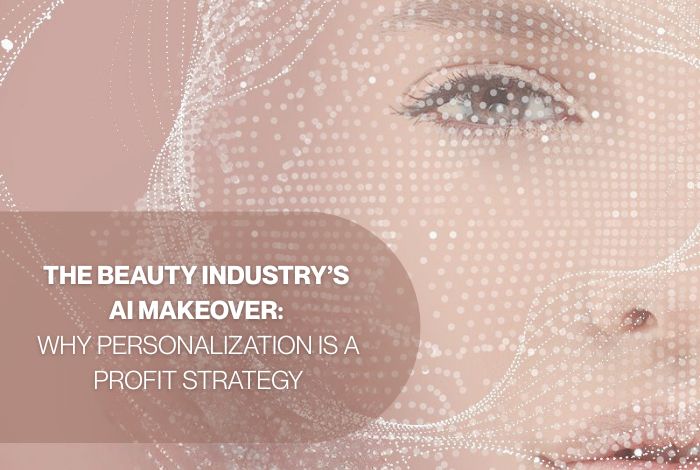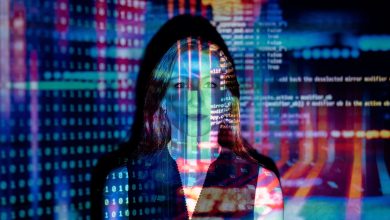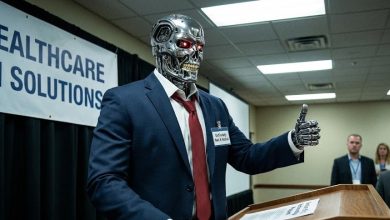
When executives discuss how AI is transforming industries, beauty rarely makes the list. Finance, healthcare, and cybersecurity dominate the conversation. At first glance, that may seem logical. How could algorithms and machine learning possibly have much to do with lipstick or foundation?
But dig deeper, and the beauty industry reveals itself as one of the most dynamic and fertile grounds for applied AI.
Beauty may be one of AI’s most compelling case studies because it demonstrates how personalization directly translates into measurable business performance.
Beauty is visual, emotional, and deeply personal. Consumers aren’t just buying a product; they’re buying confidence, identity, and self-expression. That makes the stakes of every interaction unusually high – and the margin for error unusually slim.
Over the past few years, beauty has quietly become a proving ground for AI-driven personalization at scale.
From virtual try-on tools to AI-powered shade matching, the industry is showcasing how intelligent technology can simultaneously improve customer experience, expand inclusivity, reduce waste, and generate new data-driven growth.
In my experience working with leading global beauty brands, AI has shifted from being dismissed as a gimmick to becoming a cornerstone of growth strategy.
Why Personalization Matters (And Pays Off) Now
Personalization in beauty isn’t just about making customers feel special. It’s about protecting margins and staying competitive in a market worth more than $677 billion by 2025.
Consider this: even though the average online return rate for cosmetics is “only” around 5%, for a mid-sized brand shipping 100,000 orders annually that means 5,000 units returned. With each return costing between $10–$15 to process and resupply, that’s a $50,000–$75,000 revenue drain every year. And since most products like foundation can’t be resold, the loss is often closer to 100% of their value.
And behind every return is a product mismatch – but also a lost opportunity for trust. One mismatched foundation doesn’t just cost $15. It can cost the $200–$500 lifetime value of a customer who never buys from you again.
This is where AI-powered personalization makes the difference. It reduces these leaks, builds loyalty, and turns shopping journeys into profit engines. And the numbers are compelling:
- 76% of consumers are more likely to purchase when shown personalized recommendations.
- Retailers using AI personalization tools report 15–30% revenue growth.
- Personalized shopping journeys can lift average order value by 40% and conversions by 30%.
- 75% of buyers would pay more for beauty products if offered personalized online experiences.
In short: personalization isn’t just better UX. It’s a profit strategy.
From Fun Filters to Serious ROI: The Rise of Virtual Try-On
Virtual try-on (VTO) once lived in the realm of novelty – more like a social media filter than a serious sales tool. In its early days, many dismissed it as a passing trend. But today’s versions use sophisticated AI and AR to replicate the in-store testing experience online, with lifelike rendering of colors, textures, and finishes.
The payoff is significant. Research shows shoppers who use virtual try-on are 2.4 times more likely to purchase compared to those who don’t. Even more importantly, VTO helps reduce costly returns – a persistent problem in e-commerce where return rates can eat up 20–60% of product value.
But beyond the numbers, virtual try-on addresses a psychological barrier. Buying beauty products online has always involved hesitation: Will this actually look good on me? By answering that question in seconds, AI reduces uncertainty and builds trust. What started as a novelty has become table stakes for brands that want to stay competitive in digital commerce.
Beyond revenue, VTO cuts costs and waste. Physical testers are expensive, restricted in many regions, unhygienic, and unsustainable. By replacing testers with digital experiences, brands save money while aligning with ESG commitments.
Shade Matching: Cracking Beauty’s Biggest Challenge
Few experiences frustrate beauty shoppers more than buying the wrong foundation shade. It’s also one of the costliest mistakes for brands.
Foundation matching has long been beauty’s unsolved problem. Consumers routinely waste time and money trying to find the right shade, often leaving stores with products that don’t truly match their skin. This frustration is not trivial; it’s a leading cause of returns, dissatisfaction, and wasted inventory.
AI-powered shade finders now provide instant, precise matches across diverse skin tones and undertones, areas that traditional tools and human advisors often struggled with. Some implementations report over 90% customer satisfaction, a dramatic improvement over trial-and-error shopping.
Beyond convenience, AI shade matching also tackles a critical inclusivity issue. For decades, consumers with deeper skin tones or unique undertones were underserved. By training algorithms on diverse datasets, brands can now offer accurate matches across the full spectrum of human diversity. Inclusivity, in this case, is not just a moral imperative but also a clear growth opportunity.
Tackling Choice Overload With Smart Recommenders
Today’s beauty shoppers face overwhelming choice: thousands of SKUs, dozens of shades, endless combinations. It’s no wonder then that 69% say beauty shopping feels overwhelming and 74% have abandoned a purchase because they couldn’t decide.
AI-powered recommenders cut through this noise. By analyzing preferences, behavior, and real-time interactions, they guide customers toward the right fit. Retailers using these systems report 15–30% revenue growth, with upsell and cross-sell logic driving up to 40% higher average order values.
Beyond the numbers, recommenders give customers a sense of being understood. That emotional connection translates into 78% higher likelihood of repurchase and recommendation – turning personalization into loyalty.
In effect, smart recommenders act as 24/7 digital sales assistants – increasing both immediate conversion and long-term retention.
Omnichannel Personalization: Where Consistency Drives Profit
Modern shoppers don’t move in straight lines. They might discover a product on Instagram, test it virtually on mobile, read reviews on desktop, and complete purchases in store or via app days later.
This omnichannel behavior creates risk: any inconsistency can break trust. But it also creates opportunity. When AI-driven personalization follows the shopper seamlessly across channels, the payoff is clear.
- 57% of beauty shoppers research online before buying in-store.
- Nearly 80% use their phones in-store to check products or reviews.
- Omnichannel shoppers spend 1.7 times more than single-channel shoppers.
The lesson is simple: consistency drives confidence, and confidence drives conversion.
When a shade match done on mobile is remembered at the counter, or a look tried virtually on TikTok is saved for desktop checkout, brands create continuity that builds trust and accelerates conversion.
Data: The Hidden Growth Engine
Perhaps the most overlooked impact of AI in beauty is the data it generates. Every virtual try-on, every shade match, every recommendation leaves behind a valuable trail of insights. Unlike traditional market research, which is often slow, expensive, and limited to small samples, this data is live, global, and consumer-driven.
Every try-on, shade match, and recommendation produces valuable insights:
- Which SKUs and shades are most popular across regions.
- Where in the journey shoppers hesitate or abandon.
- What seasonal or cultural trends drive purchases.
- How preferences shift by age, skin tone, or device.
This transforms personalization tools into real-time market research engines. Instead of slow, expensive studies, brands get live, scalable consumer intelligence.
The payoff:
- Smarter product development – fewer failed launches.
- Leaner operations – inventory aligned to actual demand.
- More efficient marketing – tailored campaigns that convert.
AI personalization doesn’t just serve the customer. It serves the brand by turning every interaction into strategic input for growth. For an industry known for short trend cycles and high new-product failure rates, this shift is transformative.
Human + AI Collaboration in Beauty
A common fear is that AI will replace human expertise. In beauty, that has not been the case – nor should it be. AI is not replacing makeup artists, dermatologists, or beauty advisors. Instead, it is amplifying their skills.
A makeup artist might use AI shade matching to ensure accuracy while still providing personalized styling advice. A dermatologist could combine AI skin analysis with their own judgment to recommend treatments. A retail advisor can lean on AI recommenders to make tailored suggestions more efficiently.
The lesson here is broader than beauty. Across sectors, the most effective AI applications are not those that eliminate human roles, but those that enhance them. The future is not humans versus AI, but humans plus AI.
Beauty as a Blueprint for AI Transformation
At first glance, beauty might seem like an unlikely candidate for AI disruption. Yet it has become one of the most compelling case studies of how personalization drives measurable ROI.
- Virtual try-on reduces uncertainty and drives conversions.
- Shade matching solves a decades-long inclusivity problem while cutting returns.
- Smart recommenders turn overwhelming choice into guided discovery.
- AI-driven data insights reshape product development.
- Human-AI collaboration models showcase how expertise and algorithms work best together.
What beauty proves is that AI can be profitable, inclusive, and sustainable at the same time – not just in theory, but in practice. If AI can solve something as personal and subjective as beauty, it can transform any sector willing to embrace it.
The beauty industry’s AI makeover is not just a story about cosmetics. It’s a blueprint for how intelligent technology can reshape industries everywhere.




